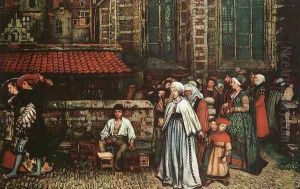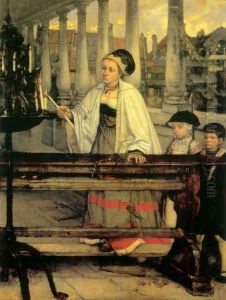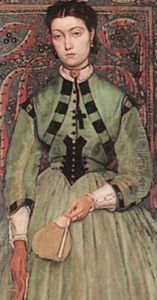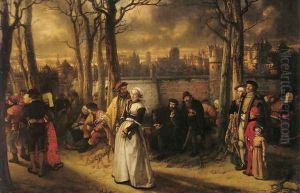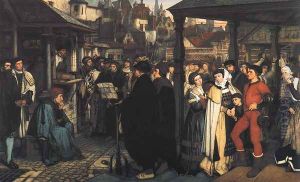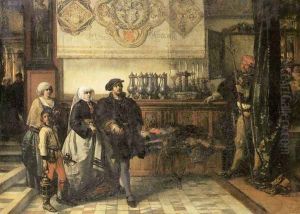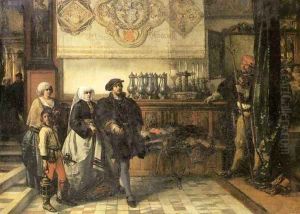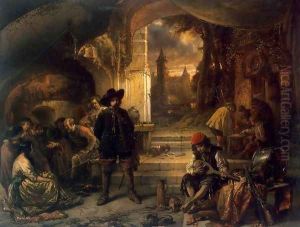Baron Jan August Hendrik Leys Paintings
Baron Jan August Hendrik Leys, often known as Henri Leys, was a distinguished Belgian painter and printmaker associated with the Romantic movement, with a later shift towards a more historically-themed, realist style. Born on February 18, 1815, in Antwerp, he was part of a period that saw a resurgence of interest in the nation's historical and cultural past.
Leys began his artistic education at the Royal Academy of Fine Arts in Antwerp, where he was influenced by the works of Flemish Old Masters such as Pieter Paul Rubens. He initially painted in a Romantic style and was known for his dramatic use of color and light. His early works often featured scenes from literature and history, with a focus on emotion and grandeur.
During the 1840s, Leys' style began to shift as he became more interested in the accuracy of historical detail and the portrayal of everyday life in the past. This change was partly inspired by his travels in Germany and the Netherlands, where he studied the work of early German and Dutch masters. He started to incorporate elements of the Flemish Primitives and the Renaissance into his work, striving for a more authentic representation of historical settings and costumes.
Leys gained significant recognition in his lifetime, with his work being exhibited widely, including at the Paris Salon, where he received numerous awards. His historical paintings often depicted scenes from the life of the 16th-century people in the Low Countries, with an emphasis on the Protestant Reformation period. Leys' meticulous approach to historical accuracy was influential on other artists of his time and helped to establish a new genre of historical painting in Belgium.
Aside from historical scenes, Leys also created portraits, genre scenes, and murals. Notably, he was commissioned to decorate the Antwerp Town Hall with large frescoes, which are considered among his masterpieces. His work was part of the art collections of several European monarchs, and he was made a baron by King Leopold I of Belgium in recognition of his contributions to art.
Leys had a significant impact on the development of the Antwerp school of painting and was an influential figure for the younger generation of artists, including his brother-in-law, the artist Hendrik Conscience, who is considered the father of the Flemish novel. Leys served as a mentor to many, including the famous Belgian artist Sir Lawrence Alma-Tadema.
Baron Jan August Hendrik Leys passed away on August 25, 1869, in Antwerp. His legacy is preserved in the numerous works he left behind, which continue to be studied and admired for their historical value and artistic merit.
